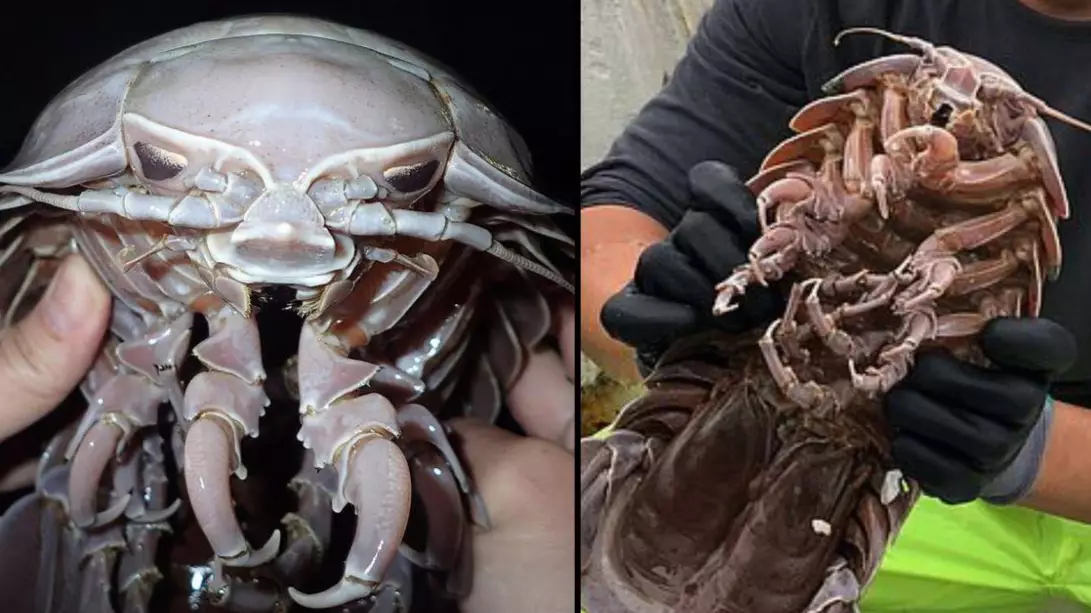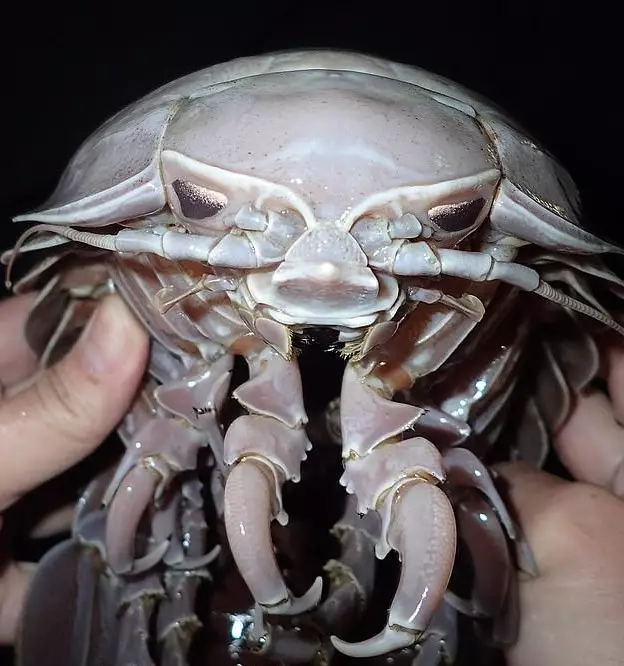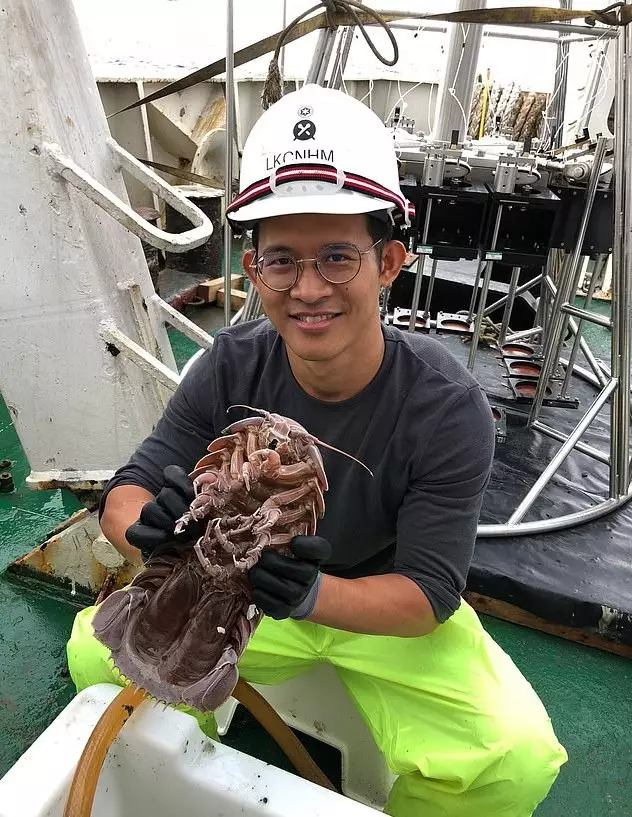
A grim-looking new species of cockroach has been found at the bottom of the Indian Ocean and it bears an uncanny resemblance to Darth Vader.
The 14-legged sea creature was discovered by researchers from Singapore who were carrying out a deep-sea survey near to the coast of Bantern, Western Java, Indonesia.
The animal was first found in 2018, and scientists soon spotted that its head and eyes look like the helmet of the Star Wars Sith Lord. However, it's been renamed the much less catchy formal name of 'Bathynomus raksasa'.

The survey was led by Peter Ng, who was researching for the National University of Singapore. He and his colleagues were exploring for two weeks, and covered 63 sites in the area.
Advert
In collaboration with the Indonesian Institute of Sciences, thousands of samples were extracted from the depths of the ocean, using a whole range of high-tec trawling, dredging and coring devices.

Their work was largely carried out at a depth of about 0.49 miles (800 metres) but they took a sample from as deep as 1.3 miles (2100 metres) below sea level.
They collected a whopping 12,000 deep-sea creatures, which included crabs, fish, jellyfish, prawns, sponges, urchins, worms, starfish, molluscs and more. A total of 800 different species were found, and out of them, an incredible 12 were completely unrecorded in scientific literature.
Advert
The Darth Vader cockroach, or should we say, Bathynomus raksasa, is a 'giant isopod'. These are a type of crustacean that looks similar to land cockroaches or woodlice but are more scientifically related to crabs and shrimp.
'Sea cockroaches' live on the floor of the ocean, scavenging on remains of other dead marine life that has sank to the bottom. But, much like land cockroaches - they can go for long periods without food.

Isopods can usually reach about 13 inches (33cm) in length, but some - like this new one - are a massive 20 inches (50cm) long. This is down to the fact that very few creatures can survive at the bottom of the ocean, due to the cold temperatures and lack of light and food.
Advert
The new isopod is only the second largest to be discovered (yet), the only one bigger is its big brother, known as 'Bathynomus giganteus'.
Speaking to the BBC, Cahyo Rahmadi of the Indonesian Institute of Sciences said: "The discovery of new species is a great achievement for a taxonomist. especially spectacular species in terms of size and even the ecosystem where the species is found."
Featured Image Credit: LKCNHMTopics: World News, Animals